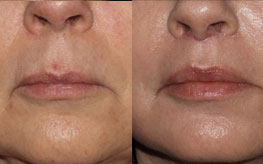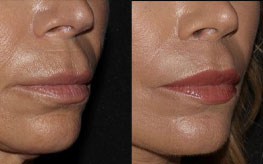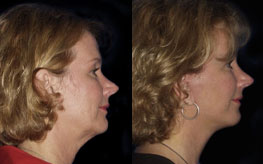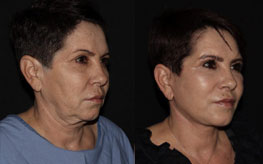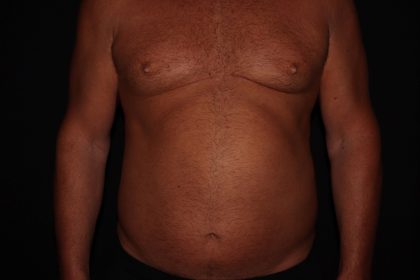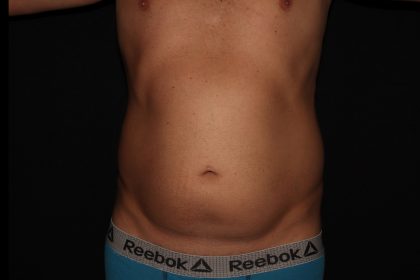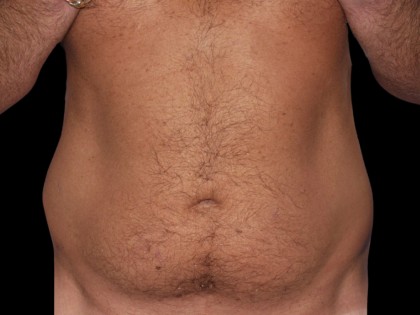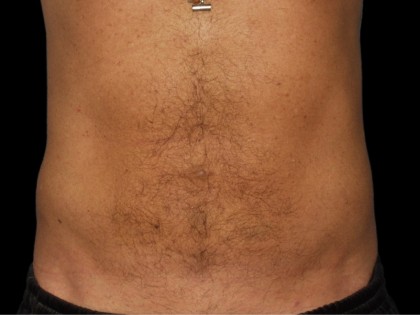Liposuction For Men
Conveniently located to serve the areas of San Diego, CA
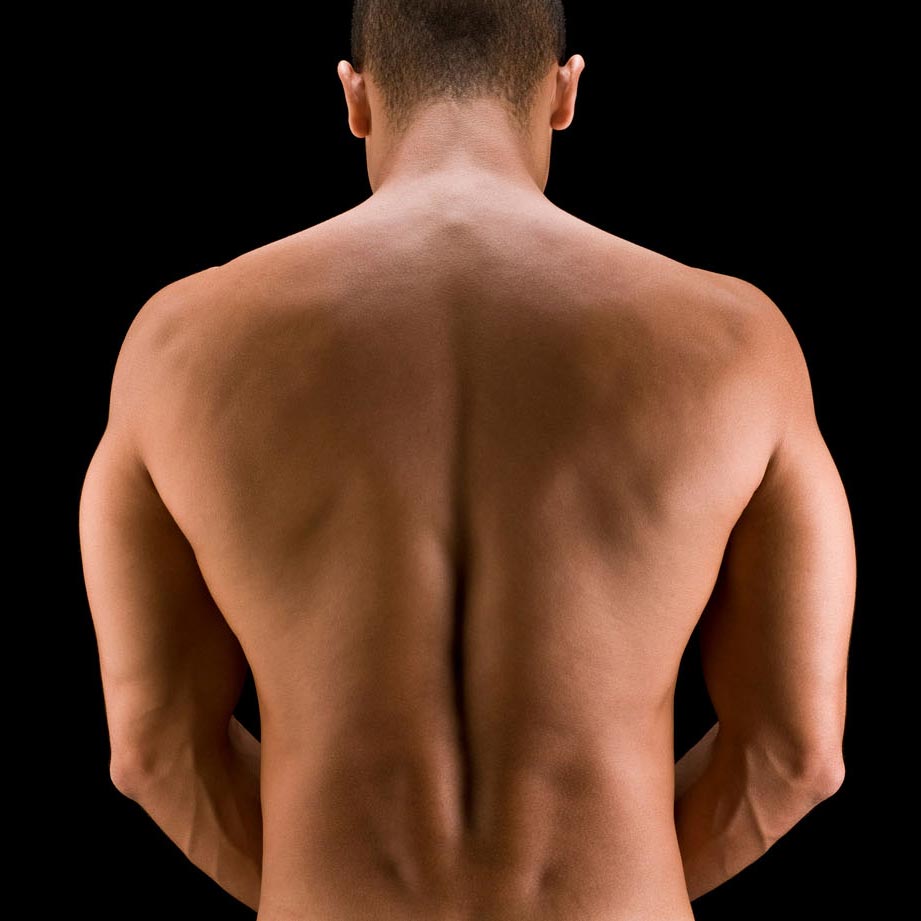
Liposuction is a great ways to contour your midsection, arms, back and legs for the better silhouette you desire. This procedure can help you achieve more balanced body proportions by smoothing areas with stubborn excess fat.
Liposuction is one of the most popular cosmetic surgical procedures in the U.S. with around half a million procedures performed each year. Many patients are looking for safer, less painful alternatives to traditional liposuction.
VASER® Lipo, or LipoSelection®, is an advanced body contouring procedure that uses gentle ultrasonic energy to selectively target unwanted fat, while preserving other important tissue structures such as blood vessels, nerves and connective tissue.
We strongly believe that liposuction should not be a substitute for weight loss. This is because it will not be successful if a patient has a weight problem. Liposuction removes fat, but it does not change the body’s metabolism or a patient’s habits. If weight is a problem before liposuction, it will be a problem after as well. When weight is a problem, we refer patients to TOTAL T CLINIC®, our anti-aging and weight loss clinic, which can be extremely effective in helping patients achieve long term weight loss.
For more information about our liposuction procedure, please contact us online or call us at 888-463-9532. We look forward to helping you look your best.
Contents
Before and After Photos
Understanding the Liposuction Procedure
Liposuction is one of our most popular procedures for instantly slimming the waistline and other parts of the body that tend to have pockets of fat that are genetic or resistant to exercise. This is a very straightforward procedure, and easy for patients to understand. However, it must be performed carefully and conservatively by an experienced surgeon to achieve optimal results.
When liposuction was first developed in the mid 80s, it involved one step—removing the fat. This was effective but resulted in a significant amount of blood loss. Therefore, the amount of fat that could be safely removed without a blood transfusion was about 2 liters, or 2 quarts.

In the mid 90s, “tumescent” liposuction was developed. This added an important step, flooding the fatty tissue with saline fluid combined with local anesthesia and adrenaline, which keeps blood loss to a minimum—less that one percent of the fluid removed. Compared to early liposuction, tumescent liposuction removes essentially pure fat, allowing about 5 liters to be removed safely.
In more recent years, a third step has been added to the procedure, to help melt fat and shrink skin. This is accomplished with technology such as ultrasound and laser. VASER® is such a technique. These are the three steps of VASER® liposuction:
- Tumescence: infiltrate tissue with fluid
- VASER: selectively melt fat and shrink skin with internal ultrasound device
- Suction melted fat
Before You Decide…
The Consultation
To ensure the most natural looking results, Dr. Alexander and Dr. Kaplan will recommend the procedure that most appropriately matches your needs and to offer realistic expectations for post-surgery outcomes.
Dr. Alexander and Dr. Kaplan will evaluate the areas of your body which you feel are out of proportion. He will examine your skin tone and determine if there is excess skin, a common problem in patients complaining of excess fat. He will help you determine if you are a good candidate for this procedure.
The success and safety of your liposuction procedure depends greatly on you being completely candid during your consultation. We will ask you questions about your health, desires and lifestyle.
Be prepared to discuss:
- Why you want liposuction, your expectations and desired outcome
- Medical conditions, drug allergies and medical treatments
- Use of current medications, vitamins, herbal supplements, alcohol, tobacco and drugs
- Previous surgeries
- History of exercise, nutrition, and weight loss
We may also:
- Evaluate your general health status and any pre-existing health conditions or risk factors
- Examine the areas of your body that bother you and check your skin tone
- Take photographs for your medical record
- Discuss your options and recommend a course of treatment
- Discuss likely outcomes of liposuction and any risks or potential complications
- Discuss the use of anesthesia during your liposuction procedure
Questions to Ask
- Were you trained specifically in the field of plastic surgery?
- How many years of plastic surgery training have you had?
- Do you have hospital privileges to perform this procedure?
- Is the office-based surgical facility accredited by a nationally- or state recognized accrediting agency?
- What procedure is recommended for me?
- Am I a good candidate for this procedure?
- How many procedures of this type have you performed?
- Where and how will you perform my procedure?
- What surgical technique is recommended for me?
- How long of a recovery period can I expect, and what kind of help will I need during my recovery?
- What are the risks and complications associated with my procedure?
- How are complications handled?
- What are my options if I am dissatisfied with the cosmetic outcome of my cheek surgery?
- Do you have before-and-after photos I can look at for this procedure and what results are reasonable for me?
Who is a good candidate?
Ideal candidates are not obese. Ideal candidates are at a stable weight and have one or a few areas that can’t be reduced, even with diet and exercise. Patients with firm, elastic skin will have the best results.
Excessive smoking may compromise your results.
What does it cost?
A quote will be provided to you after your consult with Dr. Alexander and Dr. Kaplan. Cost is always a consideration in elective surgery. We offer patient financing plans, so be sure to ask.
Costs include:
- Surgeon’s fee
- Operating room and supplies
- Prescriptions for medication
- Medical tests
- Anesthesia fees
To learn more about our partner in payment plans, please visit CareCredit.
The Liposuction Procedure
Prior to surgery, we will have you:
- Take certain medications or adjust your current medications
- Avoid taking aspirin, anti-inflammatory drugs and herbal supplements as they can increase bleeding
- Stop smoking well in advance of surgery
During a preoperative appointment, usually 1-2 weeks before surgery, we will:
- Get lab testing or a medical evaluation
- Tell you what to do on the night before and morning of surgery
- Discuss the use of anesthesia during your procedure
- Explain post-operative care and follow-up, and what help you will need after the procedure
Anesthesia
Medications are administered for your comfort during the surgical procedure. An anesthesiologist will administer general anesthesia, which is usually required for this procedure. Doctors who recommend local anesthesia for this procedure are usually dermatologists. The procedure usually takes much longer and is more painful when done this way.
How We Do It
The procedure typically takes about one to two hours depending on the individual and certain surgical variables. There are four basic steps to a breast augmentation.
Step 1 – Marking
Dr. Alexander and Dr. Kaplan will make special anatomic marks on the areas to be treated while you are standing. These marks are critical to achieving an even result. This will also give you the chance to discuss the areas to be treated.
Step 2 – The incision
Tiny incisions are made close to the areas to be treated. Usually one incision is required per area.
Step 3 – Tumescent Fluid Infusion
Dr. Alexander and Dr. Kaplan will inject tumescent fluid into the treatment areas. Tumescent fluid is a mixture of lidocaine and epinephrine. The solution helps expand the tissue layer, while the lidocaine numbs the area, and the epinephrine works by shrinking the blood vessels. This will not only help to control bleeding during the procedure, but will help to minimize bruising during your recovery.
Approximately 1cc is placed for every cc of fat that will be removed. This is called the “superwet” technique. The “tumescent” technique places about 3cc for every cc of fat removed. This is done when the procedure is going to be done under local anesthesia.
Step 4 – VASER® Emulsification of Fatty Tissue
We then insert a small probe that emits ultrasonic energy. The energy travels in high-frequency waves that are dispersed evenly from all sides of the probe. This energy causes the VASER® probe to vibrate, selectively breaking apart the fatty tissue on contact. The ultrasonic energy actually works by emulsifying, or liquefying, the fatty tissue. As the energy is targeted only toward fat, the surrounding connective tissue, blood vessels, and nerves are preserved. The probe also delivers energy to the under side of the skin, helping tighten loose skin.
Step 5 – Liposuction, Removal of Fatty Tissue
Using small cannulae and a back-and-forth motion, the fat is removed from the body using a gentle suction device or massage. This specialized suction device removes the liquefied fat while minimizing trauma to the surrounding tissues. The VASER® Lipo technique preserves these important tissues to promote an enhanced patient experience.
Step 6 – Closure
Sutures are used to close the incisions and a compressive garment is placed.
Traditional liposuction removes unwanted fat through a process called avulsion. This is a physically demanding surgical technique on both the surgeon and the patient. It uses a suction device to tear apart surrounding tissues in order to break up fatty deposits. Any tissues, such as nerves, vessels, or collagen structures in the fatty layer that get pulled into the suction cannula will be torn or damaged. This can lead to increased pain and bruising, and a long recovery time.
VASER® Lipo uses state-of-the-art ultrasound technology designed to gently reshape your body. Ultrasound is actually sound energy that travels in waves. What makes this approach unique is that these waves can be targeted specifically to fatty tissue. The high energy waves cause the VASER® probe to vibrate and liquefy the fatty tissue on contact. A specially-designed suction device is then used to gently remove the liquefied fat, while preserving the surrounding connective tissue, blood vessels, and nerves.
Why is it important to leave these other tissues in place? If blood vessels and nerves aren’t damaged, you experience minimal bruising and pain. Preserving connected tissues enhances healing and promotes good skin retraction. With its minimally-invasive approach, VASER® Lipo provides smooth, predictable results and fast patient recovery.
During the healing process, your skin will retract to give you a smooth, natural-looking result.
Doctors report that patients are able to go back to work within days after their VASER® Lipo procedure. One patient reported the following of her recovery experience after her VASER® Lipo treatment, “Two previous traditional liposuction treatments left me in pain and with considerable bruising, as well as weeks-long recovery. What a difference with my recent VASER® Lipo treatment…I had no bruising or swelling…and returned to work the Monday following my Friday procedure.”
You should begin to see results within the first few weeks. Your results will continue to improve with time as the tissues in the treatment area heal, with final results revealed between 3 and 6 months.
Informed Consent
The decision to have liposuction is extremely personal and you’ll have to decide if the benefits will achieve your goals and if the risks and potential complications are acceptable. In general, the overall risks are small this type of surgery. However, it is common to require additional procedures to manage problems that may arise.
Pain from liposuction varies from patient to patient. Some are very sore, like after an extremely hard workout. Others have very little discomfort whatsoever. Most pain or discomfort resolves in 48 hours. Patients are given pain pills to alleviate the discomfort.
We will explain in detail the risks associated with surgery. You will be asked to sign consent forms to ensure that you fully understand the procedure you will undergo and any risks and potential complications.
The risks include:
- Surface irregularities
- Fluid accumulation
- Pain or numbness, which may persist
- Possibility of revisional surgery
- Scarring
- Bleeding (hematoma)
- Infection
- Burns of the skin
- Anesthesia risks
- Deep vein thrombosis, cardiac and pulmonary complications
Important Terms to Know
Local Anesthesia: the surgical area is numbed up, but the patient is awake. Sometimes a patient will be given an oral medication, like Valium, to help with relaxation.
Sedation (Twilight) Anesthesia: the patient is given an IV, and is made sleepy with medications given through the iv. The level of sedation can be adjusted, from barely sleep to very sleepy. Sometimes sedation is given by the surgeon, and other times it is administered by an Anesthesiologist.
General Anesthesia: the patient is asleep, requiring that the airway be protected, either by a standard breathing tube, or by a laryngeal mask (LMA), an inflatable mask that goes in the back of the throat but doesn’t go down the trachea. Through the airway, an anesthesiologist gives gases to put the patient asleep. Drugs may also be given through the IV.
Cannula: A small hollow tube used with suction to remove fat from the body.
Superwet Technique: A method of tumescence, where approximately 1cc is placed for every cc of fat that will be removed. This technique is most commonly used when the patient is under general anesthesia.
Tumescent Technique: One method of tumescence, which uses A about 3cc for every cc of fat removed. This is done when the procedure is going to be done under local anesthesia.
Recovery
You will need someone to drive you to and from surgery and to stay with you for at least the first night following surgery. If you experience shortness of breath, chest pains, or unusual heartbeats, you should call Dr. Alexander and Dr. Kaplan immediately.
You will likely experience a recovery period of 24 to 48 hours and an additional reduced-activity period of a few days. You will experience soreness and swelling for a few weeks.
Exercise and normal activity can resume at approximately 1 week. Over time, post-surgical swelling will decrease and incision lines will fade.
Results
Patients who undergo liposuction at our practice are generally very happy with the results of their procedure. Because dieting and exercise are sometimes not enough to remove fat from specific areas of the abdomen, our patients are pleased to have the option of liposuction to trim and tighten their waistline.
When large amounts of fat are removed, patients can see an immediate difference even though there is swelling. For smaller amounts, the swelling may hide the improved contour temporarily. Bruising varies tremendously. Some patients have no bruising, others have significant bruising, which can take a few weeks to resolve.
Swelling subsides over the first two weeks, but takes 3-5 months to resolve completely. Numbness is common but resolves quickly in most patients. Scars are usually very small and difficult to see, once healed.
As long as your weight remains stable, the results of your liposuction surgery will be long lasting. You will find it easier to wear certain styles of clothing and swim suits. Like most patients who have had liposuction, you may also have a boost in self-confidence.

